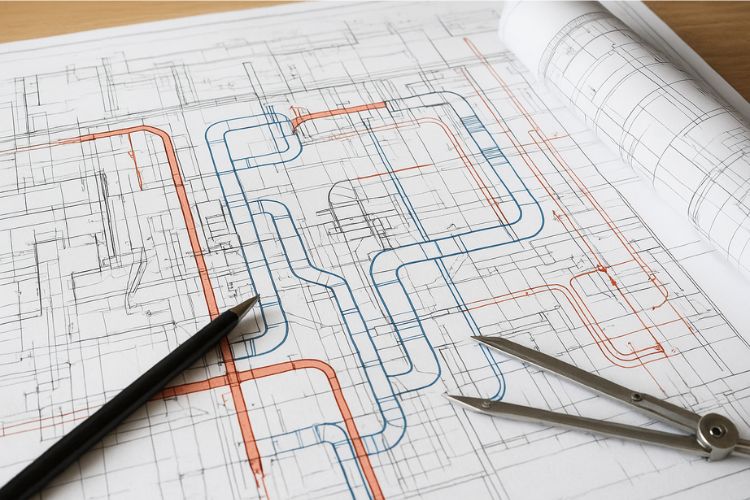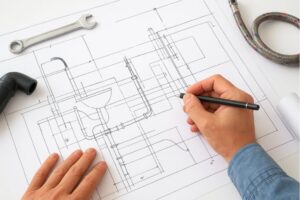Ever wondered why some construction projects run seamlessly while others face constant delays? The secret often lies in the details. Coordination drawings play a pivotal role in ensuring every team member—from architects to contractors—stays aligned, reducing costly errors before the first brick is laid.
What Are Coordination Drawings?
Coordination drawings are more than just technical sketches; they are the visual backbone of a project. Essentially, these drawings integrate the designs of multiple disciplines—mechanical, electrical, plumbing, and structural—into one comprehensive blueprint. By providing a clear overview of system placements and interferences, these drawings help detect clashes before construction begins, saving time and resources.
Why They Matter
According to the National Institute of Building Sciences, conflict detection through detailed coordination can reduce project delays by up to 40%. Imagine catching an HVAC duct running through a water pipe before installation—prevention is always better than expensive rework.
Key Benefits of Coordination Drawings
- Clash Detection: Identifying conflicts between systems early prevents costly redesigns.
- Improved Communication: Teams can visualize complex systems together, bridging gaps between trades.
- Time Efficiency: Reduces on-site confusion, ensuring projects stick to schedule.
- Cost Savings: Minimizes material wastage and avoids expensive corrections.
Real-World Application
Consider a high-rise building project: mechanical systems, electrical conduits, and plumbing networks all intersect in tight spaces. Using Plumbing Shop Drawings alongside HVAC shop drawings allows engineers to pinpoint clashes and reroute systems digitally rather than on-site. The result? Fewer delays, smoother installations, and happier clients.
How Coordination Drawings Are Created
The process begins with 3D modeling software, where architects and engineers overlay system designs. Key steps include:
- Model Integration: Merging architectural, structural, and MEP models into one environment.
- Clash Detection: Using software tools to automatically highlight conflicts.
- Review & Approval: Teams analyze and resolve issues collaboratively.
- Final Documentation: Producing a comprehensive set of HVAC shop drawings and coordination sheets for on-site use.
Best Practices for Maximum Accuracy
- Engage all disciplines early in the design phase.
- Maintain a centralized digital model to avoid version conflicts.
- Schedule regular coordination meetings to discuss updates.
- Document resolved clashes for future reference and accountability.
FAQs
What is the difference between coordination drawings and shop drawings?
Coordination drawings show the integrated layout of all building systems, highlighting potential clashes. Shop drawings, like Plumbing Shop Drawings, provide detailed fabrication and installation instructions for specific trades.
How do coordination drawings save costs?
By identifying clashes and errors digitally, coordination drawings prevent costly on-site rework, reduce material wastage, and minimize project delays.
Are coordination drawings required for all projects?
While smaller projects might manage without detailed coordination drawings, complex buildings with multiple systems benefit greatly from them to ensure accuracy and efficiency.
Final Thoughts
In construction, precision is everything. Coordination drawings transform chaotic plans into a synchronized, actionable roadmap. By embracing them, project teams not only save time and money but also elevate the quality and reliability of their work. In essence, these drawings are not just a technical requirement—they are the blueprint for peace of mind.
Read More: Why Detailed Plumbing Shop Drawings Matter More Than Ever
Blog Development Credits
This blog was a team effort fueled by smart ideas. Soumyajit Sardar picked the topic. Most content was crafted using tools like ChatGPT and Google Gemini. The Digital Piloto team polished and optimized the blog to ensure it’s clear, engaging and SEO-friendly.


